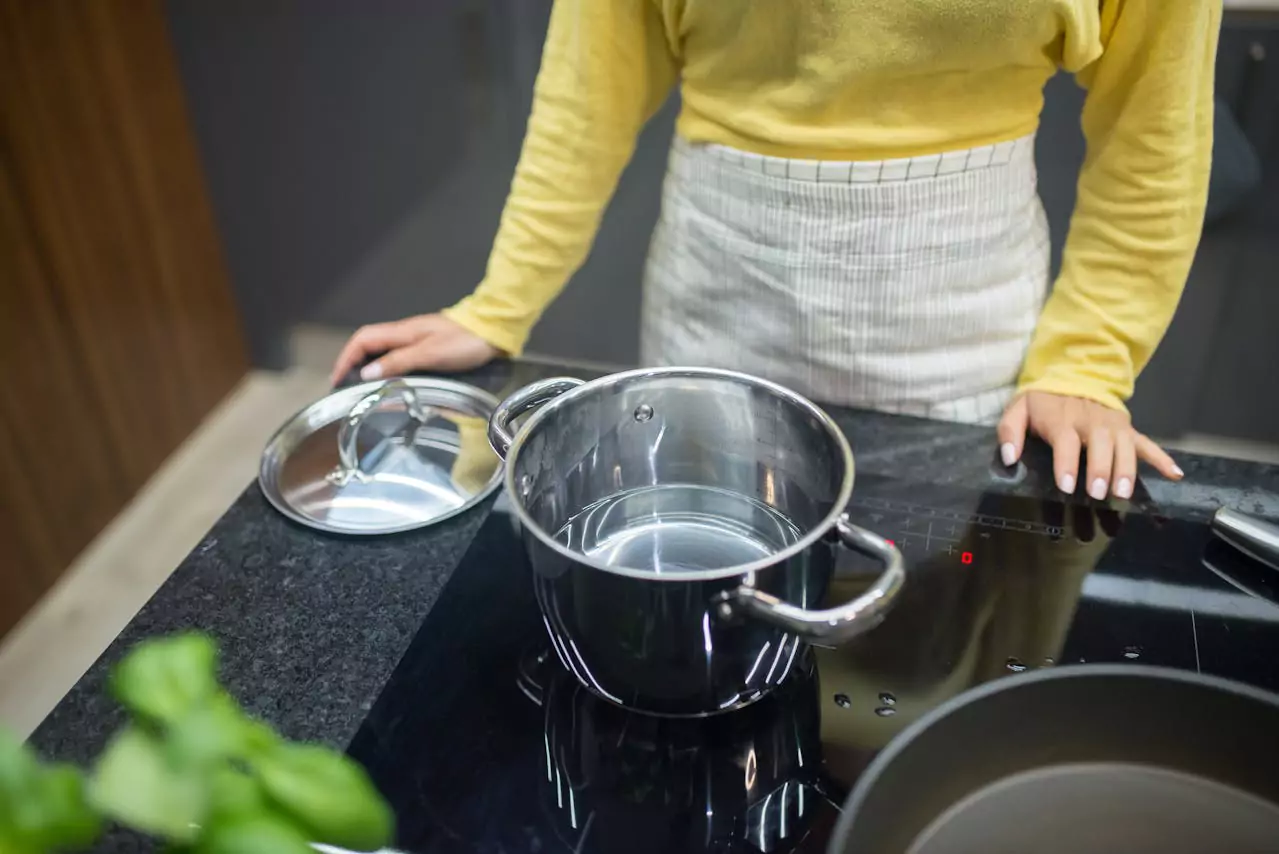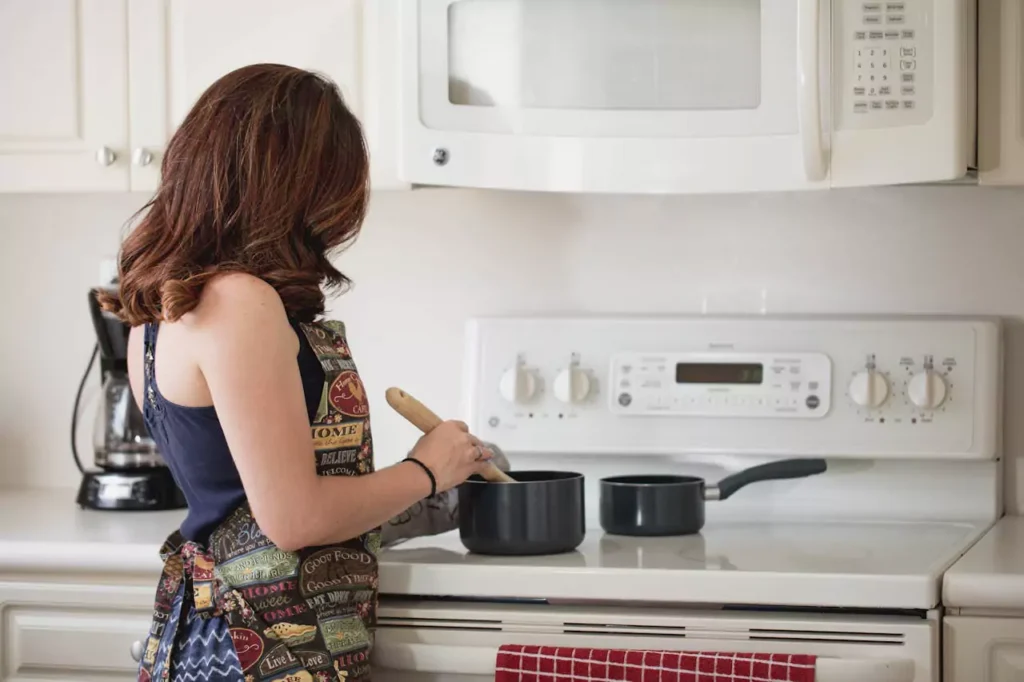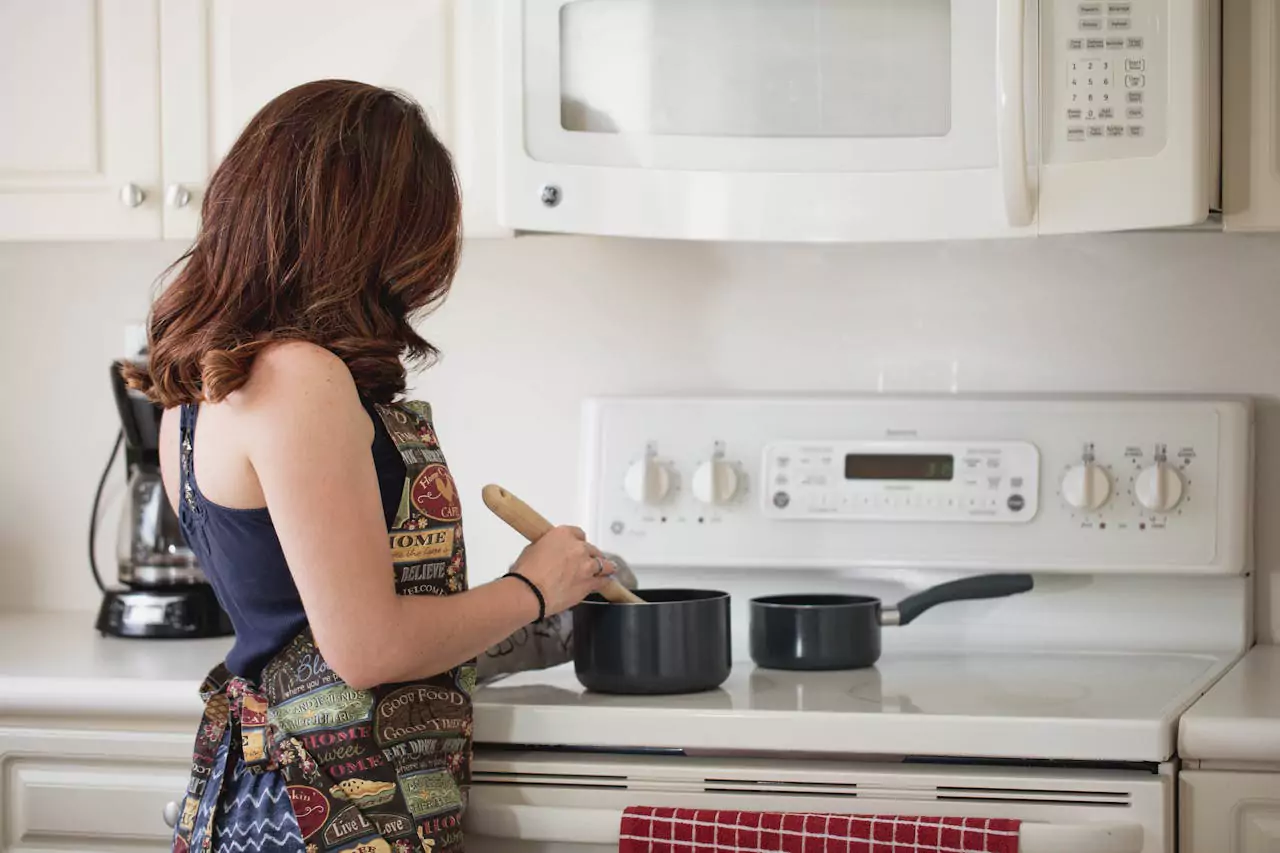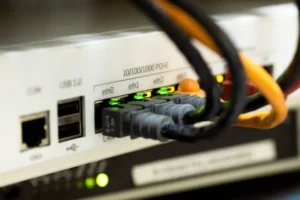Now Reading: Can an Induction Stove Burn You?
- 01
Can an Induction Stove Burn You?
- Home
- Home Appliances
- Kitchen Appliances
- Can an Induction Stove Burn You?
Can an Induction Stove Burn You?
![]() Anne MaddisonHome Appliances, Kitchen AppliancesAugust 5, 202558 Views
Anne MaddisonHome Appliances, Kitchen AppliancesAugust 5, 202558 Views

If you’re thinking about switching to an induction stove or already have one, you might be wondering if it can burn you. The short answer is yes, an induction stove can burn you, but not in the same way as a gas or electric stove.
Induction cooktops are often seen as a safer option because they do not use an open flame or exposed heating coil. Instead, they use a magnetic field to heat your cookware directly. The stove’s surface stays cooler than traditional stoves, which makes it seem safer at first. Still, that does not mean you are completely safe from getting burned.
In this blog, we will explain how induction cooking works, which parts of the stove get hot, and how burns can happen. We will also share safety tips and clear up common myths. Whether you are new to induction cooking or want to be more cautious, this guide will help you stay safe in the kitchen.
Does an Induction Stove Get Hot to the Touch?
At first glance, an induction stove looks like a smooth, flat piece of glass. It can be hard to tell if it is even on. So what happens if you touch it while it is turned on?
The surface of an induction stove does not get hot in the same way a gas or electric burner does. Instead of heating the glass, the stove uses a magnetic field to heat only the pan sitting on top. The glass surface may feel warm, but it is usually not hot enough to burn you right away.
This warmth comes from something called residual heat. When a pan gets hot during cooking, it transfers some of that heat to the glass below it. That is why the area under the pan can stay warm even after the pan is removed. However, the rest of the stove stays cool to the touch.
If you touch the burner while a pan is heating, it might feel warm or even slightly hot, depending on how long you were cooking. But it is much less likely to burn you compared to a coil burner or open flame. That is one reason many people see induction stoves as a safer choice.
Another safety feature is that the stove will not turn on unless a pan with a magnetic base is placed on it. If you accidentally switch on the stove without a pan, nothing happens. This reduces the risk of someone touching a hot burner or leaving it on by mistake.
In short, while the glass can get warm from the pan’s heat, the induction stove does not heat itself. This makes it safer for most households, especially if you have kids or often find yourself distracted while cooking.
Can You Still Get Burned While Using an Induction Stove?
Yes, you can still get burned while using an induction stove. But the burn usually comes from the cookware, not the stove itself.
When you cook with an induction stove, the pan gets very hot. That heat can easily cause a burn if you touch the pot or pan directly. The cooking surface may feel cooler than a gas or electric stove, but the cookware sitting on top can still reach high temperatures. If you grab a handle without using a mitt or towel, you can burn your hand just like with any other stove.
Another common risk comes from boiling liquids. If hot water or oil spills over the edge of the pan, it can splash onto your hand or arm. Steam rising from the pot can also burn your skin if you lean in too close or try to lift a lid without being careful.
The glass surface of the induction stove can also stay warm for a short time after you finish cooking. This warmth is left behind from the hot pan, not from the stove generating its own heat. The good news is that the surface usually cools faster than a gas burner or an electric coil. Still, it’s best to be careful and wait a few minutes before touching the area where the pan was sitting.
In short, an induction stove lowers the chance of burns compared to other stoves, but it does not remove the risk completely. Always be careful when handling hot cookware, boiling liquids, or steam, no matter what kind of stove you use.
What Materials Stay Cool or Heat Up on an Induction Cooktop
Not everything on an induction stove gets hot. The way induction works means that only certain materials respond to it. This helps make it safer than other types of stoves.
What Gets Hot
Magnetic cookware
Induction cooktops only heat cookware made from magnetic materials. This includes cast iron, some stainless steel, and other ferrous metals. These pans are heated directly by the magnetic field.
Pan base and sides
Once the pan starts heating, its entire body will warm up. That includes the base and the sides. Be careful when touching any part of the pan during or after cooking.
Cooktop glass beneath cookware
While the induction surface itself doesn’t heat up, the glass under the pan can get hot from the contact with the pan. This is called residual heat. It usually cools down faster than traditional burners, but it can still cause a burn if touched right away.
What Stays Cool
Nearby surface area on the cooktop
Any part of the cooktop that’s not under a pan usually stays cool. This is helpful when you need to place utensils or ingredients nearby.
Non-magnetic materials
Items like copper, aluminum, glass, or plastic do not heat up unless they are combined with a magnetic layer. If they don’t have that, they won’t respond to the induction burner.
Utensils or towels placed away from cookware area
If you accidentally leave a spoon or cloth near the burner but not directly on it, it usually stays cool. Still, be cautious not to let anything come in contact with the hot pan itself.
Understanding what heats up and what stays cool helps prevent accidents and keeps your cooking experience safer.
Wondering if your induction cookware is compatible with electric stoves? Read our complete guide that breaks down how different cookware materials work across stove types.
Built-In Safety Features on Induction Cooktops
One of the biggest reasons people choose induction stoves is the built-in safety features. These cooktops are designed to make cooking safer, especially for families with kids or for anyone who wants to avoid accidents in the kitchen.
Auto shut-off when no pan is detected
An induction stove will not heat up unless it senses a proper pan on the surface. If you remove the pan while cooking, the stove automatically stops sending power. This prevents heat from building up when nothing is there to absorb it.
Pan detection system
The stove knows if the pan you are using is suitable. If the cookware is not induction-friendly, like some types of aluminum or copper, the stove simply won’t turn on. This helps prevent overheating or damage.
Overheat sensors
Many induction stoves have sensors that watch for high temperatures. If the pan or cooking zone gets too hot, the stove will lower the heat or shut down to avoid burning food or damaging the cookware.
Child lock and control lock functions
These locks stop the buttons or touchscreen from being used accidentally. You can activate the lock while cooking or when the stove is off. It’s a helpful feature for households with curious kids or pets who might press buttons.
Spill detection or pause features on advanced models
Some high-end models can detect when liquid spills over the edge of the pan. If that happens, the stove may pause heating or sound an alert so you can wipe it up safely. This helps prevent messes from turning into bigger problems.
Residual heat indicator lights
Even though the stove doesn’t heat up like a regular burner, the glass surface can still hold some heat after cooking. Indicator lights show you which zones are still warm. This reminds you not to touch that area until it cools down fully.
Together, these features make induction cooktops some of the safest options available. They help prevent burns, reduce fire risks, and give you more control over your cooking environment.
How to Avoid Burns When Using an Induction Stove
Even though induction stoves are generally safer, it’s still possible to get burned mostly from the hot cookware. Here are some easy ways to protect yourself and others in the kitchen.
Always use handles and pot holders
Pots and pans heated on an induction stove can still get very hot. Always use the handle when moving them. A pot holder or oven mitt gives extra protection if the handle is metal or warm to the touch.
Do not touch pan bottom or cooking area immediately after use
After cooking, the bottom of the pan will stay hot for a while. The glass surface underneath the pan may also hold some heat. Give it time to cool down before touching or cleaning the area.
Keep children away during and after cooking
Kids might not understand that even if there’s no flame, the stove area can still be hot. Keep them at a safe distance while you’re cooking and right after, until everything has cooled down.
Let glass surface cool before wiping or cleaning
Wiping a still-warm cooktop with a wet cloth can cause steam burns. Wait until the surface is completely cool before cleaning it.
Use cookware with insulated handles if possible
Some pots come with silicone or plastic-coated handles that stay cooler than bare metal. These make it safer to lift or move pans without needing extra protection.
Taking these simple steps can help you avoid burns and stay safe while using your induction stove.
How Induction Is Safer Than Gas or Electric
Induction stoves are often seen as one of the safest ways to cook, and for good reason. Compared to gas or electric stoves, they offer several safety benefits that can give you more peace of mind in the kitchen.
No open flame
Gas stoves use real flames, which can catch on towels, clothes, or anything flammable nearby. Induction cooktops don’t use fire at all. There’s no flame to worry about, which lowers the risk of kitchen fires.
Surface doesn’t get dangerously hot
With electric stoves, the coils or glass tops get very hot and can stay that way for a while. Induction cooktops only get warm from the pan sitting on them. The surface underneath stays much cooler than a typical burner.
Heats only the pan—not the air around it
Induction sends energy straight to the pot or pan. That means less heat escapes into the air. It keeps your kitchen cooler and also lowers the chance of accidental burns from reaching over a hot stove area.
No risk of gas leaks or carbon monoxide
Gas stoves carry the risk of gas leaks, which can be dangerous or even deadly. Induction stoves don’t use gas at all, so there’s no chance of a leak or carbon monoxide build-up in your home.
Fewer burn injuries from direct stove contact
Since the induction cooktop doesn’t heat up unless a proper pan is there, the chances of burning your hand on the stove are much lower. You’re more likely to get a burn from touching a hot pot than from the cooktop itself.
In short, induction stoves cut down on many of the common risks found with gas or electric cooking. They offer a safer way to cook while still giving you great control over heat and timing.
Myths About Induction Stove Burns
There are a lot of myths about induction stoves and how safe they are. While these stoves are generally safer than gas or electric ones, not everything people say about them is true.
“Induction stoves are cold even when in use”
This is not completely true. The cooktop itself does not create heat, but it can still get warm. When a hot pan sits on the glass surface, it transfers heat to it. So while the stove may not feel as hot as a gas burner, it can still cause a mild burn if touched right after cooking.
“You can touch the burner while cooking”
This is risky. Even though the induction burner only works when a pan is on it, the moment you remove the pan, the glass can still be hot. Touching it right away is not safe.
“Only the pan gets hot”
This is mostly true. The magnetic field heats the pan directly, not the cooktop. But the glass right under the pan will absorb heat, and the area around it may feel warm. Always be cautious around the cooking area, especially after use.
These myths can lead people to be too relaxed when using an induction stove. Knowing what’s real and what’s not helps you stay safe.
Induction Stoves with Great Features
If you’re looking to upgrade to an induction stove with helpful safety features, here are a few options to consider. These models offer smart functions like auto shut-off, child lock, residual heat indicators, and more.
1. Duxtop LCD 1800W Double Induction Cooktop
This dual-burner model features sensor touch controls, 20 temperature settings, and a sleek LCD display. Works with magnetic cookware and can be used built-in or on the counter. Easy to clean with a smooth glass surface.
2. Nuwave Double Induction Cooktop
This powerful 1800W cooktop has two large 8″ coils, independent controls, and 94 precise temp settings from 100°F to 575°F. The dual shatter-proof glass surfaces support up to 25 lbs per side. Great for flexible, high-performance cooking.
3. GE Profile 30″ Built-In Induction Cooktop
For those looking for a full cooktop replacement, this GE model offers powerful induction burners, a sleek design, and top-tier safety features like control lock, pan detection, and residual heat indicators. Ideal for families and daily use.
4. Empava 30″ Built-in Induction Cooktop
This sleek 4-zone cooktop features touch sensor controls, power boost for fast heating, a child lock, and zone timers. Its smooth black glass surface blends into any modern kitchen. Great for multitasking, safety, and precision cooking.
Final Thoughts
Yes, induction stoves can cause burns, but they usually do not come from the cooktop itself. Most of the time, burns happen because of hot pots, pans, or boiling liquids—not the stove surface.
If you use the stove properly and pay attention while cooking, the risk of getting burned is low. The built-in safety features and fast-cooling surface make induction cooking one of the safest options you can choose.
It is a great choice for families with kids, older adults, or anyone who wants a safer and cleaner way to cook. Just remember to treat hot cookware with care, and let the surface cool before touching it or cleaning up.
Some of the links on this site are affiliate links. This means I may earn a small commission if you buy through them, at no extra cost to you. I only recommend products I truly believe in and think will add value to you.
Related Posts
Previous Post
Next Post
Climate ControlJuly 27, 2025
What Air Conditioner Size Do I Need?
Climate ControlJuly 28, 2025
Can Air Conditioner Make You Sick?
Home AppliancesAugust 24, 2025
Are Home Air Conditioner Tune Ups Necessary
Climate ControlAugust 23, 2025
Can Air Conditioning at Home Trigger Asthma?
- 03
Home AppliancesJuly 27, 2025
What Air Conditioner Size Do I Need?
- 04
Home AppliancesJuly 28, 2025
Can Air Conditioner Make You Sick?

























